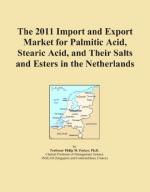|
This section contains 201 words (approx. 1 page at 300 words per page) |
Stearic acid (or n-octadecanoic acid) has a chemical formula of CH3(CH2)16COOH and is a straight chain molecule. It is one of the most commonly found saturated fatty acids and it occurs as glycerides in the majority of animal and vegetable fats. It can account for 25% of the composition of animal fat. Stearic acid was isolated and named by French chemist Michel-Eugène Chevreul (1786-1889), who also isolated palmitic acid and oleic acid.
Stearic acid is particularly abundant in the harder fats with higher melting points. Pure stearic acid has a melting point of 158°F (70°C) and a boiling point of 709°F (376°C) at which temperature it shows thermal decomposition. Stearic acid, along with palmitic acid, can be used to make candles. Stearic acid is also used in the manufacture of suppositories. Like all fatty acids stearic acid is insoluble in water, but is soluble in ether and hot alcohol.
The sodium and potassium salts of stearic acid are soaps, sodium or potassium stearate. Stearic acid can be utilized in the Krebs tricarboxylic acid cycle where it can yield some 180 molecules of ATP (compared to sugar which will yield only 38 molecules).
|
This section contains 201 words (approx. 1 page at 300 words per page) |


